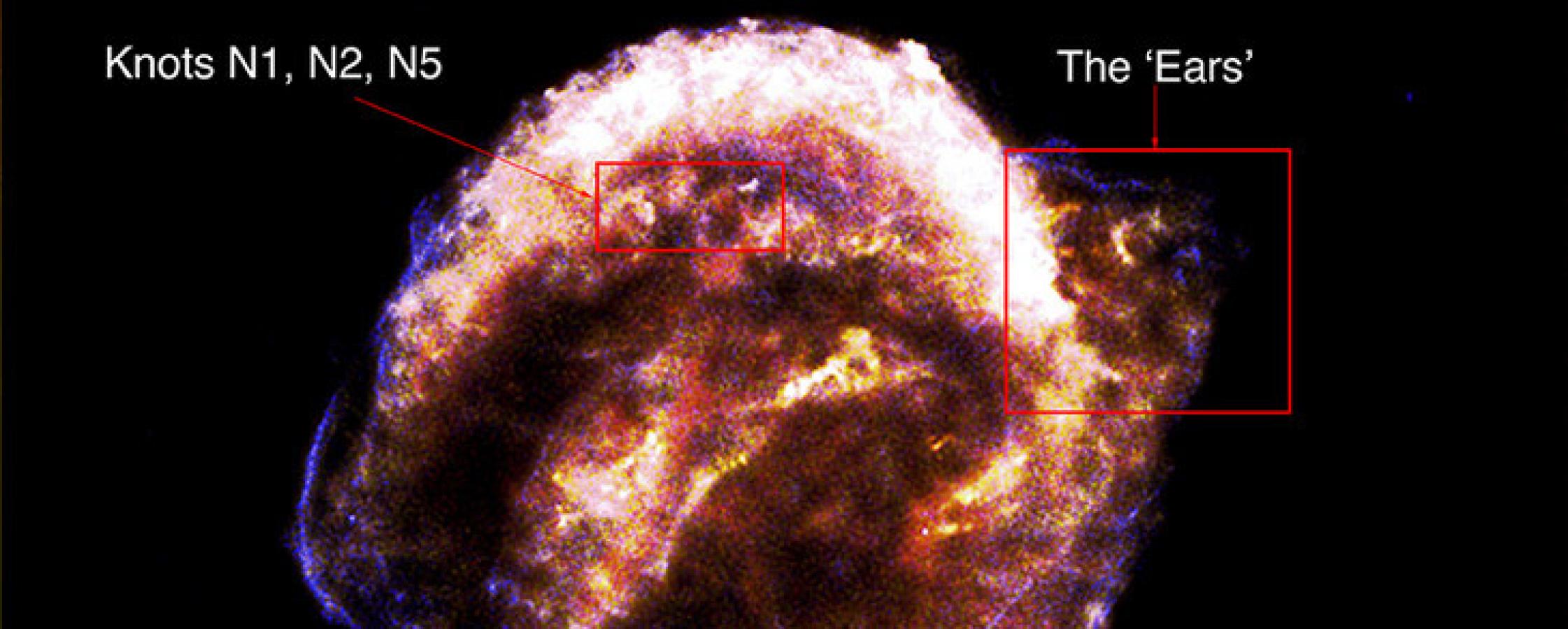Material blasting away from the site of an exploded star has been recorded traveling at speeds faster than 20 million miles per hour — about 25,000 times faster than the speed of sound on Earth. A team of astronomers, including David Burrows at Penn State, describe the observation made using NASA’s Chandra X-ray Observatory in a paper that appears April 27, 2020 in The Astronomical Journal.
The Kepler supernova remnant is the debris from a detonated star that is located about 20,000 light years away from Earth in our Milky Way galaxy. In 1604 early astronomers, including Johannes Kepler who became the object’s namesake, saw the supernova explosion that destroyed the star.
We now know that Kepler’s supernova remnant is the aftermath of a so-called Type Ia supernova, where a small dense star, known as a white dwarf, exceeds a critical mass limit after interacting with a companion star and undergoes a thermonuclear explosion that shatters the white dwarf and launches its remains outward.
The latest study tracked the speed of 15 small “knots” of debris in the Kepler supernova remnant, all glowing in X-rays. The fastest knot was measured to have a speed of 23 million miles per hour, the highest speed ever detected of supernova remnant debris in X-rays. The average speed of the knots is about 10 million miles per hour.
“It is really surprising to find these knots moving at such high velocities after more than 400 years,” said Burrows, professor of astronomy and astrophysics at Penn State and a member of the research team. “It means that the density of the knots has to be quite high, which implies that the explosion is very inhomogeneous.”
The researchers estimated the speeds of the knots by analyzing the X-ray spectra — the brightness of X-rays of different wavelengths — obtained in 2016 with the Chandra High Energy Transmission Grating. By comparing the wavelengths of features in the X-ray spectrum with laboratory values and using the Doppler effect, they measured the speed of each knot along the line of sight from Chandra to the remnant.

Chandra X-ray image of the Kepler supernova remnant. Tracking these images over nearly a decade and a half shows that pieces of this debris field (knots) are still moving at about 23 million miles per hour over 400 years after the explosion was spotted by early astronomers. Credit: NASA/CXC/Univ of Texas at Arlington/M. Millard et al.
The researchers also used Chandra images obtained in 2000, 2004, 2006 and 2014 to detect changes in position of the knots over time. They used these changes in position to measure the speed of the knots perpendicular to our line of sight. These two measurements combined to give an estimate of each knot’s true speed in three-dimensional space.
The high speeds in Kepler are similar to those scientists have seen in optical observations of supernova explosions in other galaxies only days or weeks after the explosion, well before a supernova remnant forms decades later. This comparison implies that some knots in Kepler have hardly been slowed down by collisions with material surrounding the remnant in the approximately 400 years since the explosion.
Based on the Chandra spectra, eight of the 15 knots are definitely moving away from Earth, and only two are confirmed to be moving towards it. The other five do not show a clear direction of motion along our line of sight. This asymmetry in the motion of the knots implies that the debris may not be symmetric along our line of sight, but more knots need to be studied to confirm this result.
Four of the knots are all moving in a similar direction and have similar amounts of heavier elements such as silicon. The researchers suggest that the matter in these knots likely originated from the same layer of the exploded white dwarf.
One of the other fastest moving knots is located in the "ear" of the right side of the remnant, supporting the intriguing idea that the three-dimensional shape of the debris is more like a football than a uniform sphere, said the researchers.
The explanation for the high-speed material is unclear. Some scientists have suggested that the Kepler supernova remnant is from an unusually powerful Type Ia supernova, which might explain the fast-moving material. It is also possible that the immediate environment around the remnant is itself clumpy, which could allow some of the debris to tunnel through regions of low density and avoid being decelerated very much.
In addition to Burrows, the research team includes Matthew Millard, Jayant Bhalerao, and Sangwook Park at the University of Texas at Arlington; Toshiki Sato at RIKEN in Saitama, Japan, and NASA's Goddard Space Flight Center; John "Jack" Hughes at Rutgers University; Patrick Slane and Daniel Patnaude at the Harvard-Smithsonian Center for Astrophysics; and Carles Badenes at the University of Pittsburgh.
NASA's Marshall Space Flight Center manages the Chandra program. The Smithsonian Astrophysical Observatory's Chandra X-ray Center controls science from Cambridge Massachusetts and flight operations from Burlington, Massachusetts.
